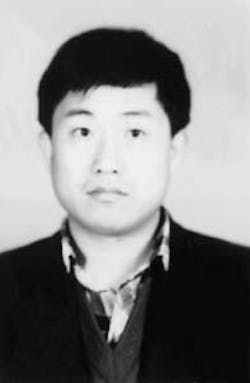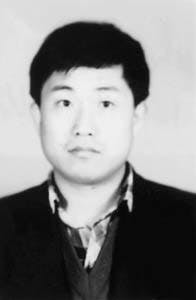TECHNOLOGY More accurate method devised for tank-bottom annular plate design
Tianyun Wu
University of Petroleum
Dongying, Shandong, China
A calculation has been developed for predicting storage-tank annular plate bending stresses.
This method is more accurate than the prevailing API theoretical calculation1 and the theoretical calculations of the Academy of Sciences of China (ASC).
The need for the method became clear after strain-gauge measurements were taken on two 10-year old crude-oil storage tanks at Qinhuangdao, China. Strain measurements on the two lowest shell courses and bottom annular plates at two locations around each tank revealed that the annular plate measured stresses were 11% higher than those predicted by the API calculation and about 24% lower than those predicted by the calculations of the ASC.
The main difference between the calculations and the strain-gauge survey occurs in the values of the shell bending stresses at the bottom junction and the maximum annular-plate bending stresses.
The difference derives from the support given to the annular plate by the tank's foundation. Although the shell bending stresses are of less significance (Fig. 1 [22679 bytes]), the maximum annular-plate bending stresses are of great significance because their values are between yield stress and twice yield stress.
The API calculation fails to consider the effects of the inner flexible foundation; the ASC calculation is too arbitrary or simplified about the effects of the inner flexible foundation and does not consider the annular plate's protruding length.
In China's standard 20,000 and 50,000 cu m crude-oil storage tanks, the maximum annular plate bending stresses are up to twice the yield stress.
In such cases, if the foundation support is not considered carefully, the maximum annular-plate bending stresses may exceed twice the yield stress.
Suggested here is a new type of foundation to support the bottom plate. Focal point of this presentation is to arrive at the maximum annular plate bending stresses that will generally conform to the strain measurements.
Measured tanks
The two crude-oil tanks are 80 m in diameter and 21.8 m high. Each tank has a flat bottom and a pontoon-type floating roof.
Every bottom plate is butt-welded to another. The center plates are of steel to SS41 with the annular ring of the same steel (SPV50Q) as the seven bottom courses of the shell.
The shell is made up of nine courses of varying thickness (in mm, respectively, 32.5, 24.5, 21.5, 18.0, 15.5, 12.5, and 12.0) from bottom course to top, with a shell height of 21.8 m.
The material used in annular ring and shell bottom course has a minimum yield stress of 500 MPa.
The relatively high winds recorded at the tanks' site made necessary five wind girders. Tank foundation is of the ring-wall type with a width of 800 mm. The shell plate center is at the center of the ring wall.
Data for calculations and expressions are in the accompanying equations box.
Theoretical stresses
The reasonable assumption that the annular plate lifts clear of the foundation for some distance (L) is adopted by several annular-plate stress calculations under different loads, but it is necessary to assume reaction conditions that would not complicate the calculations very much.
It is important that an engineering calculation be simple and easy to understand and use.
Similar to API and ASC calculations, the calculation offered here also adopts the assumption that the annular plate lifts clear of the foundation for some distance (L). This is referred to as the rigid-foundation beam section (Fig. 2 [40630 bytes]).
Contrary to API and ASC calculations, the calculation offered here assumes neither a simply supported right support as in the API calculation nor a triangle-flexible-foundation reaction-force section as in ASC calculation.
This method considers all the remaining part toward the tank center as semi-infinite flexible foundation beam (Fig. 3 [40054 bytes]). Therefore, a new calculation method was developed that couples semi-infinite flexible foundation beams with rigid foundation beams for the bottom plates in large oil storage tanks.
This method is applicable when the annular plates have enough width or are butt-welded with the center plates.
Annular, shell calculations
From (Fig. 3 [40054 bytes]), the semi-infinite flexible foundation beam is under the loads of R2, M2, P, and flexible foundation. Its left-joint deflection (y2) is 0 because it is the left joint that just begins to touch the flexible foundation, but its left-joint rotation angle (y2') does not equal 0.
Their expressions are as shown in Equations 1-12 of the accompanying equations box.
The API calculation shows that when we do not consider the shear force (Qo) at the bottom junction, the rotation angle of the shell's lowest point (0s) is shown in Equation 13.1
Assuming values of L, then Mo, M2, R2, and 0b are calculated from Equations 10, 11, 4, and 12. The respective values of 0s are calculated from Equation 13 for the same values of Mo.
When a certain L results in the same moment (Mo) and slope in both shell and annular plate 0b = -0s, this L is what we need, and so are Mo, M2, R2, and 0b.
When we do consider shear force (Qo) at the bottom junction, the deflection and rotation angle of the shell's lowest point, then ys, 0s are shown in Equations 14 and 15.
The annular plate radial deflection at the bottom junction is given by Equation 16.
In this case, Equation 14 = Equation 16 and Equation 15 = -Equation 12 yields Equations 17 and 18.
Assuming values of L, then Mo, M2, and 0b are calculated from Equations 10, 11, 4, and 12. The respective values of (Qo)1 and (Qo)2 are calculated from the same values of Mo.
When a certain L results in (Qo)1 = (Qo)2, this L is what we need, along with Mo, Qo, M2, R2, and 0b.
Annular stresses
The measured annular stresses at the point of 20 mm from the shell's inner wall inward to the tank center are 370.1, 375.5, and 387.5 MPa at gauge Position A, and 389.0, 403.5, and 416.0 MPa at gauge Position B.
The calculated annular stresses at the same point, according to the method proposed here, are 370.9 MPa when Qo fi 0 and 376.1 MPa when Qo = 0.
Table 1 [39463 bytes] shows calculations with each of the three methods: API, ASC, and the proposed. The latter can predict more accurately the maximum annular stresses than the other two methods.
The remainder of the results showed considerable variation. This was probably caused by the annular plates being uplifted from the foundation for a distance exceeding L before water filling, by the butt-welding between the annular and center plates whose thickness variation is great, or by the great thickness difference between the first and second shell courses.
Reference
1. Denham, J.B., Russell, J., and Wills "How to Design a 600,000-Bbl Tank," Hydrocarbon Processing, Vol. 47, No. 5 (May 1968).
The Author
Tianyun Wu has been a lecturer for the center of oil and gas storage and transport research in University of Petroleum, China, since graduation in 1989. He has a BS (1986) and an MS (1989) in mechanical engineering, and he holds a valve patent.
Copyright 1996 Oil & Gas Journal. All Rights Reserved.

